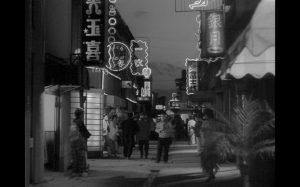Thursday, November 29, 2018

Ideograms and how they can become drawings , loosing their first property of transmitting information , to turn into images we can just contemplate : this is what interested me the most inside the first book I picked up and this is why I chose « The Art of writing » as as second step. This book gathers a large range of approaches towards writing from different countries and cultures. On every right side of the double pages inside the book, you can find images depicting those ideograms, all in black and white, with an old presentation : captions on the side, numbers & letters under the images : this gives me the feeling to dive into fragments of a huge archive, travelling through excerpts just like in those history textbooks in high school. The ruined aspect of the book as well as the old list with all the borrowing dates since 1971 emphasize even more this feeling you can have while entering in an space full of stories. I also appreciate the big « a » on the 4th cover : the « a » as the « starting point of the civilisation » with the creation of the western alphabet ; placed in the end, a kind of inversion is created that i also find interesting. While browsing through the pages, I could notice in the images how present were the ideograms inside architecture and space : on lightpanels of an Asian street, engraved on a south american’s stele or on a catholic church and many more. There is this need for humans to implant visible thoughts in their environments. This need, almost primal, is also what touched me because it carries at the same time a sincerity almost primal (see the page called « primitive signs ») and a desire to understand the world in a more objective way in order also to transmit this knowledge to others.
757.3 une 1
Wednesday, November 21, 2018
Thursday, November 22, 2018
I was first attracted by the back of the book : placed among hundred of others, this thin pale blue back on which we could read – or rather just see in my case, as i can’t understand Japanese- the fine title.
At first sight, this book also looked a bit like a notebook -due to the black cover and the worn out aspect of it- maybe this is another thing that appealed my attention as I have a special affection for notebooks/sketchbooks, everything randomly sketched and unfinished.
I wouldn’t have picked up this book if there wasn’t those yellow pages in some parts of the book (p.73-88 and p.93-108 and p.121 to the end). They have a different quality of paper : less soft and shiny than the other pages wich mostly depict photographs of masks (the book’s subject I guess). We could also notice more clearly in those parts, how the contour was shining in gold , as if the book was made out of cult paper.
There is also this recurrent fascination for Asian ideograms, that implies a complete inability to understand the meaning of what the book is about , consequently bringing a focus on the the form and how beautiful compositions the writings create. Ideograms and the all language and culture brought with it become drawings and pure contemplation for me, more than a clear explanation and precise knowledge.
My reaction is a typical European person’s reaction who become quickly fascinated by all this « exotic » aesthetics , anchored in a culture, a language, cods and signs & symbols she can’t totally understand. However, I found this naive reaction, from the moment it becomes conscious, also beautiful. This feeling can be brought closer to the feeling we get in front of an artwork , or in our everyday life, when at a sudden moment, a sort of spark -made out of several elements brought together by coincidence at this precise instant- brings beauty to the present situation.
772.5 CAT 3
